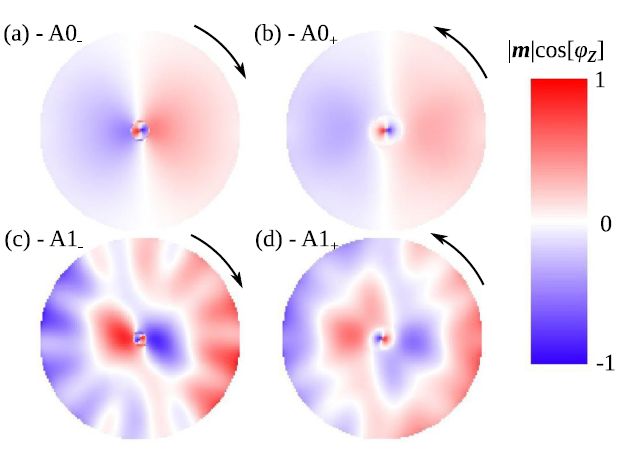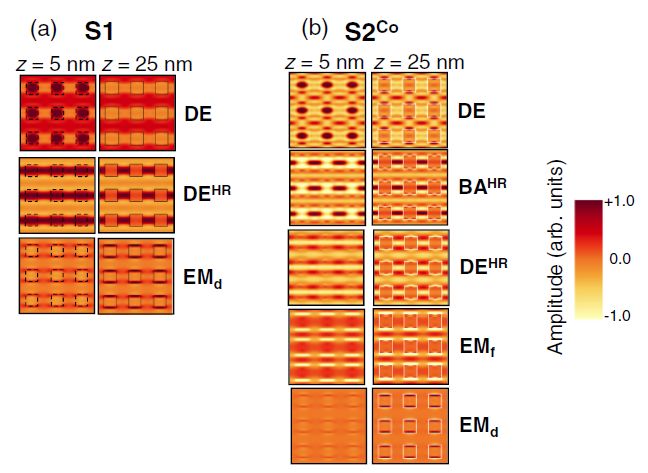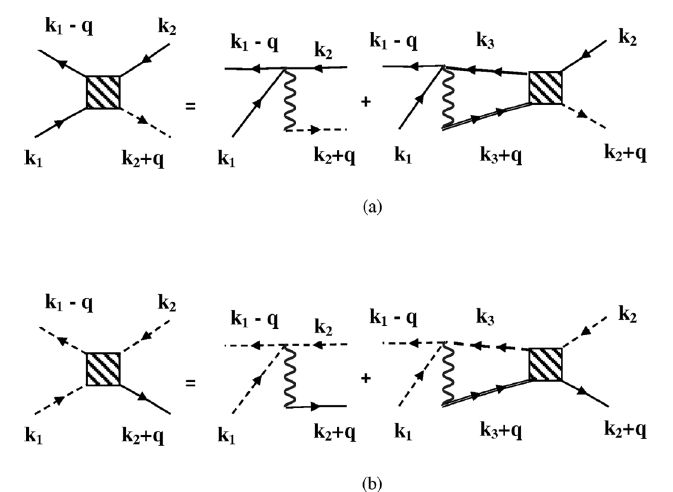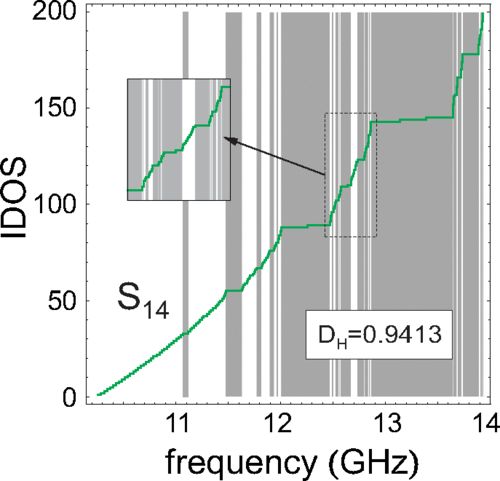R. V. Verba, A. Hierro-Rodriguez, D. Navas, J. Ding, X. M. Liu, A. O. Adeyeye, K. Y. Guslienko, and G. N. Kakazei
Phys. Rev. B 93, 214437 (2016)
We study both experimentally and using micromagnetic simulations how the spin excitation spectra of the vortex-state circular dots made of soft magnetic material change with the dot thickness t in the range t = 20–80 nm. It is found that in addition to higher-order gyrotropic modes which are nonuniform along the dot thickness and were observed earlier, azimuthal spin-wave modes having curled structure at the dot top and bottom faces appear in the spectrum when increasing the dot thickness. For the dot thickness t > 50 nm these “curled” modes become the lowest ones in the spin-wave excitation spectrum. It is also shown that all spin-wave modes with azimuthal index m = ±1 are hybridized with the vortex gyrotropic modes. However, while “common” azimuthal (0,±1) modes are hybridized with the main gyrotropic G0 mode and reveal large frequency splitting of their doublet, the curled modes can be hybridized with higher-order gyrotropic modes and the doublet frequency splitting vanishes with the dot thickness increase.

Fig.1. Azimuthal spin-wave mode profiles in a nanodot having 20 nm thickness.
P. Malag`o, L. Giovannini, R. Zivieri, P. Gruszecki and M. Krawczyk
Phys. Rev. B 92, 064416 (2015)
In this paper, we theoretically study the influence of a nonmagnetic spacer between ferromagnetic dots and a ferromagnetic matrix on the frequency dispersion of the spin-wave excitations in two-dimensional bicomponent magnonic crystals. By means of the dynamical matrix method we investigate structures that are inhomogeneous across the thickness represented by square arrays of cobalt or permalloy dots in a permalloy matrix. We show that the introduction of a nonmagnetic spacer significantly modifies the total internal magnetic field, especially at the edges of the grooves and dots. This permits the manipulation of the magnonic band structure of spin waves localized either at the edges of the dots or in matrix material at the edges of the grooves. According to the micromagnetic simulations two types of end modes were found. The corresponding frequencies are significantly influenced by the end modes’ localization region. We also show that, with the use of a single ferromagnetic material, it is possible to design a magnonic crystal preserving the properties of bicomponent magnonic crystals and magnonic antidot lattices. Finally, the influence of the nonmagnetic spacers on the technologically relevant parameters such as group velocity and magnonic bandwidth are discussed.

Fig.1. Spatial profiles (real part of the out-ofplane component of the dynamic magnetization vector) for spin waves with large differential scattering cross section in the center of the Brillouin zone. The spatial profiles of spin wave modes from the bottom part of the Py film (in the plane z = 5 nm in left column) and in the plane crossing dots (for z = 25 nm in right column) are shown in 3 × 3 primitive cells.
V. N. Krivoruchko
Phys. Rev. B 94, 054434 (2016)
The microscopic model of longitudinal spin excitations in a two-sublattice ferrimagnet using the diagrammatic technique for spin operators as been studied. The diagrammatic approach provides us with an efficient procedure to derive graphical representations forperturbation expansion series for different spin Green’s functions and thus to overcome limitations typical for phenomenological approaches. The infinite series involving all distinct loops built from spin wave propagators are summed up. These result in an expression for the longitudinal spin susceptibility χzz(q,ω). It is predicted that both acoustic and exchange longitudinal excitations are energetically above similar modes of transverse spin waves at the same temperature and wave vector.

Fig.1. Graphical representation of the equation for the effective
four-point vortex.
J. Rychły, J. W. Kłos, M. Mruczkiewicz, and M. Krawczyk
Phys. Rev. B 92, 054414 (2015)
We studied a finite Fibonacci sequence of Co and Py stripes aligned side by side and in direct contact with each other. Calculations based on a continuous model, including exchange and dipole interactions, were performed for structures feasible for fabrication and characterization of the main properties of magnonic quasicrystals. We have shown the fractal structure of the magnonic spectrum with a number of magnonic gaps of different widths. Moreover, localization of spin waves in quasicrystals and the existence of surface spin waves in finite quaiscrystal structure is demonstrated.

Fig.1. Intergated density fo states (IDOS) of the Fibonacci sequence S14 composed of wide Py and Co stripes of 250 nm width and 30 nm thickness. Gray areas mark the most pronounced magnonic gaps. The inset presents the magnified region of IDOS plot where the complex band-gap structure is visible.

